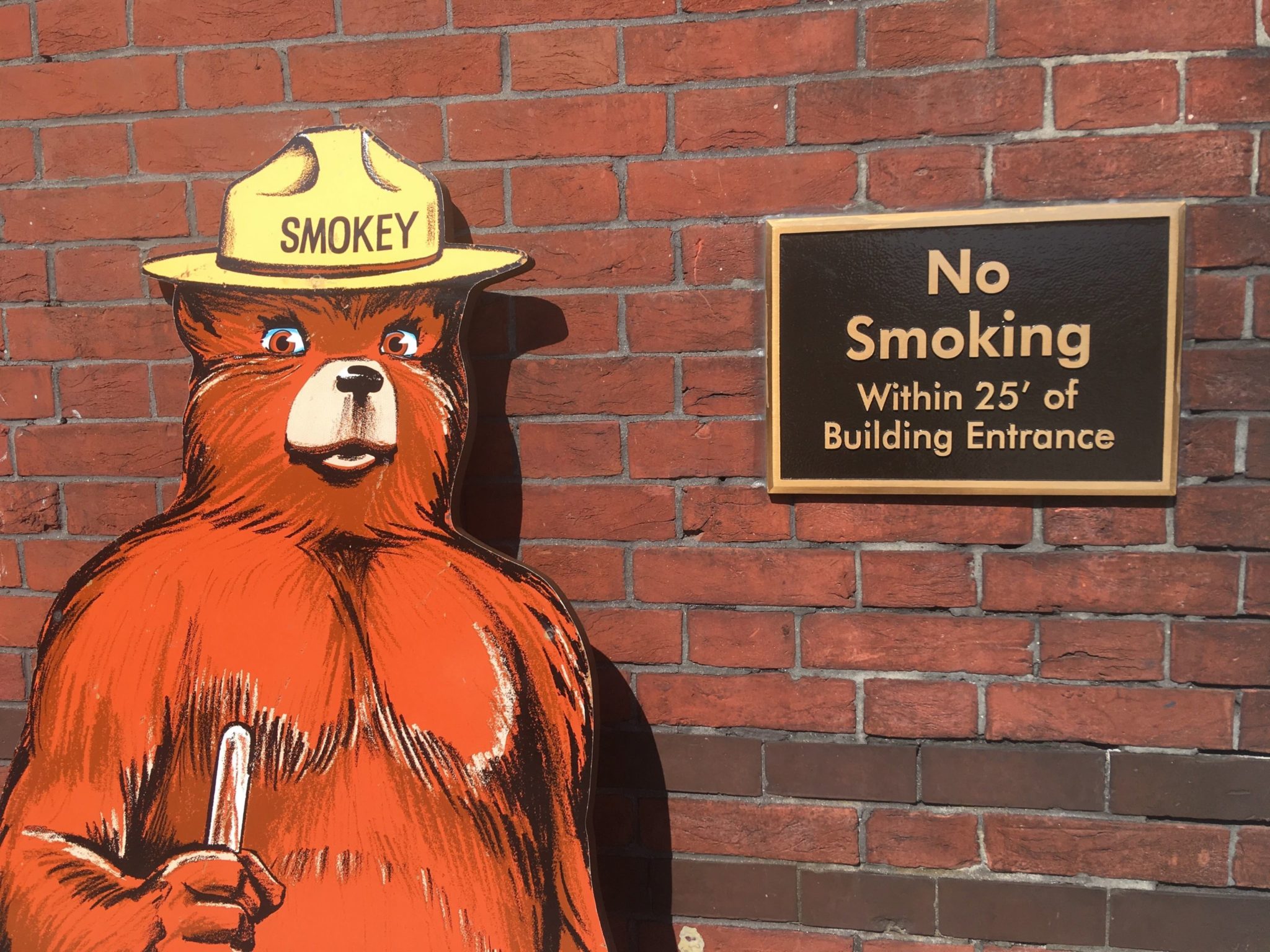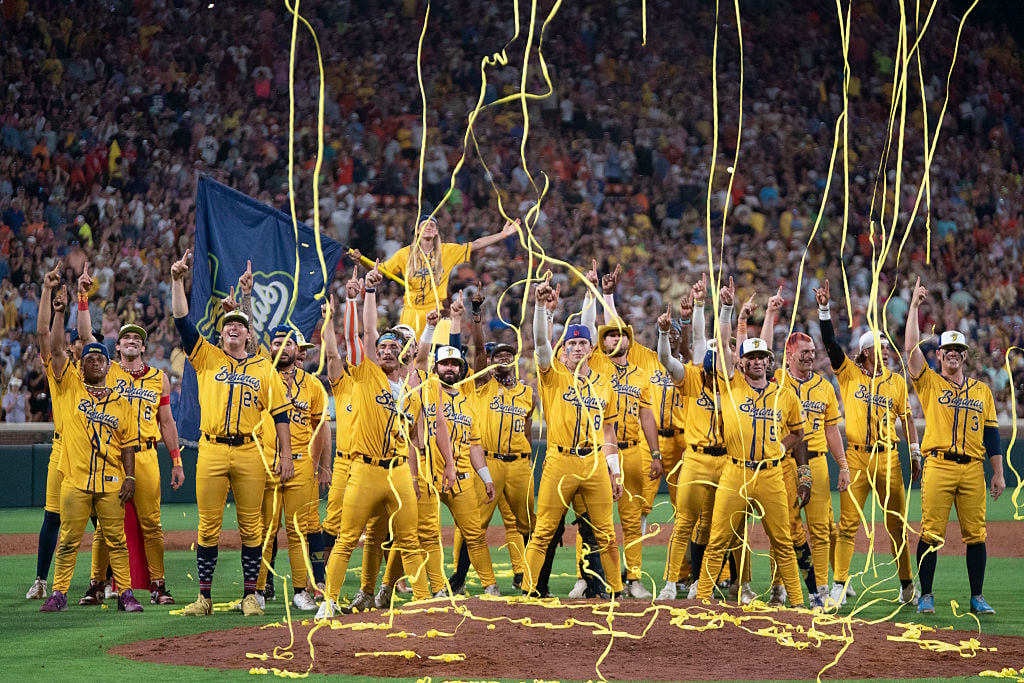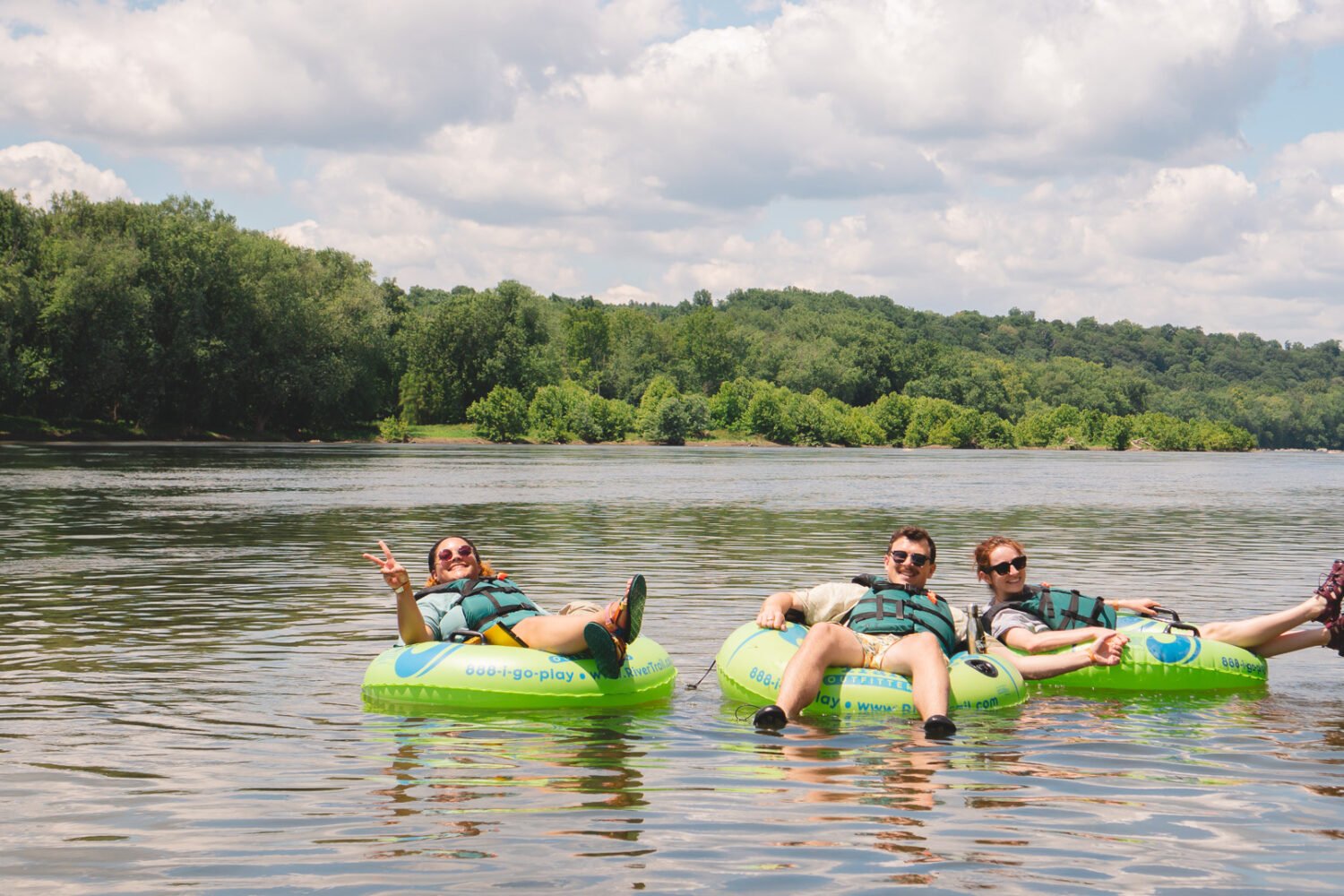As you may have heard, everyone’s favorite conservation-themed animal mascot—sorry, Woodsy Owl—turned 75 today. With the nearest National Forest about two hours away, you might be looking for more local ways to celebrate with Smokey Bear. The US Forest Service headquarters in Southwest DC has you covered, with an animatronic Smokey, birthday balloons, coloring books, and of course, important information about our public lands.
You’ll find the animatronic Smokey reclining with his feet on his desk right when you enter the exhibit, taking a load off from preventing destruction of our public lands. At his feet is a pile of fan-mail and on his desk is a short stack of Smokey’s business cards. As far as animatronic bears go, this one’s pretty good: With your first step in he hits you with his signature slogan.
One of the facts you’ll learn in the exhibit is that Smokey’s original catchphrase was about forest fires specifically, not all wildfires. The phrase was updated in 2001 to Only You Can Prevent Wildfires. “Smokey understands the importance of fire prevention in all our nation’s wildland treasures,” a panel explains, “including forests, our grasslands, and our shrublands.”
Stickers, magnets, coloring books, bracelets, and balloons are all available at the exhibit for Smokey’s diamond jubilee. The rest of the space focuses on the mission, history, and commitment of the Forest Service. A small room modeled after a wooden lodge holds videos, maps, and abundant flannel. A little “forest” room provides a bench for sitting and relaxation.
Smokey Bear’s debut in 1944 was actually prompted by World War II-era national security concerns. When Japanese submarines fired shells near Los Padres National Forest in 1942, Americans grew worried that more explosions could ignite raging wildfires. By encouraging their own citizens to be cautious with fire, the Forest Service figured they could prevent some of the destruction.
Panels in the exhibit show that Smokey has indeed made an impact. There were 40,000 fewer wildfires in the 1990s than there were in the 1930s, owed in part to more educated campers.
But according to statistics from the National Interagency Fire Center, the acreage of the fires is actually going up. In the 1990s, over 33 million wild acres burned. In the 2000s, that number grew to over 69 million. This is likely due to climate change, which makes forests drier and more susceptible to burning, according to a report released by the Trump administration.
So if you can’t celebrate with Smokey today, be sure to drown and stir your campfires. Only you—and, perhaps, a national and international response to climate change—can prevent wildfires.
USDA US Forest Service Visitor and Information Center, 1400 Independence Ave., SW. Free.






